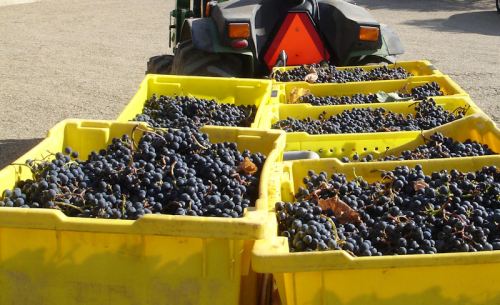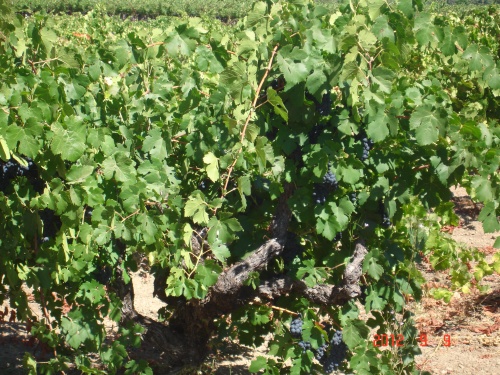Will you look at the color and size of these things? I was taking one of my favorite walks, by a who knows how old vineyard, and spotted these crazy-looking, neon grapes.
Could it be that I’ve laid my eyes on Flame Tokay grapes, in person, for the first time of my life?
And look at the vine’s next-door neighbor. Nice, normal looking black clusters. Could be Zinfandel, Grenache, Carignan, Petite Sirah, Barbera, Alicante Bouchet… Who knows? It’s a field blend.
In the first wine boom in California (late 1800s) there was a great deal of Italian influence and many of the grower/producers were inclined to plant several compatible varieties all together. They’d harvest and vinify them all together, too, so the blend was pre-made.
Since different varieties ripen at different rates, they’d end up with less mature fruit in the mix, which would keep the acidity lively and very ripe fruit, too, for rich fruity flavor, and everything in between. And they knew that including a little Barbera in the vineyard would also bolster acidity, where if they wanted more structure, Petite Sirah was the go-to grape. This choir of different varietal aromas and flavors coming together provided a kind of instant complexity and natural balance. Continue reading →







